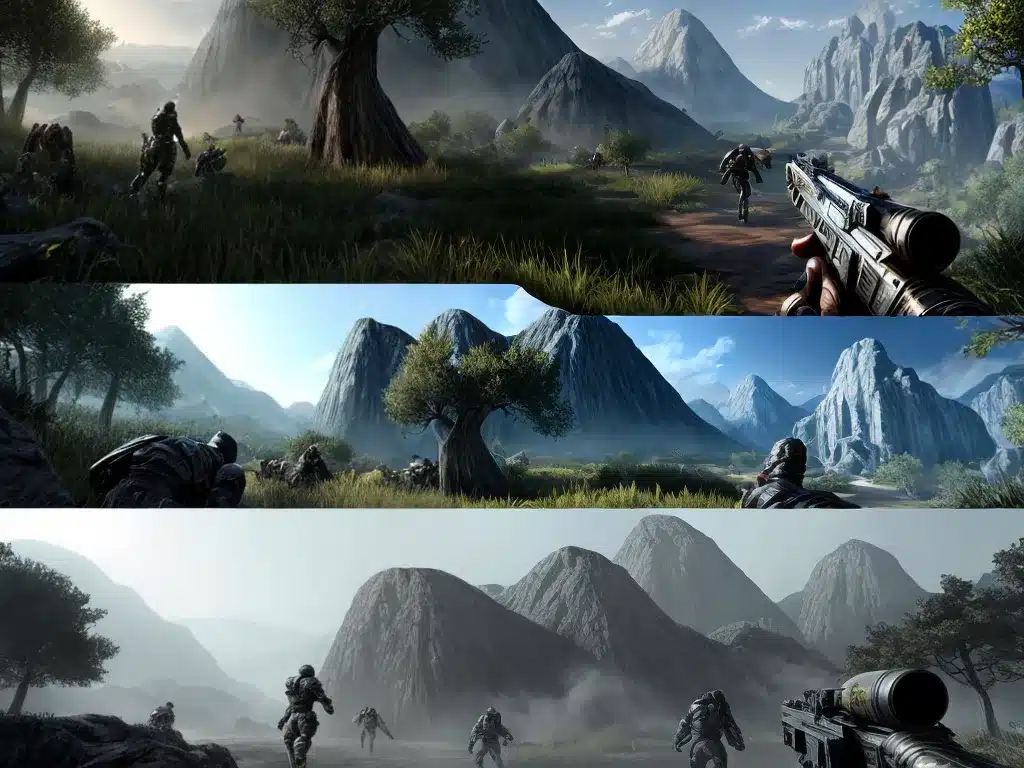
How Better Graphics Don’t Always Equal Better Games
Introduction
Graphics in video games have come a long way. As technology improves, game developers are able to create more realistic and visually impressive graphics. However, better graphics don’t necessarily make a game better. There are many factors that contribute to a good game beyond just the visuals. In this article, I’ll discuss why better graphics don’t always equal better games.
Gameplay and Story Are More Important Than Graphics
The most important elements of a good game are the gameplay and story. No matter how great the graphics are, a game won’t be very fun if the gameplay mechanics are boring or repetitive. Gameplay keeps players engaged and challenged. A compelling storyline gives purpose to the gameplay and immerses players in the game world. While good graphics can enhance these elements, the core gameplay and narrative are far more significant.
Real World Examples
Consider some classic games that are still loved today despite having outdated graphics:
- Super Mario Bros on the NES has simple 8-bit graphics, yet its solid platforming gameplay makes it an iconic title.
- Chrono Trigger, with its 16-bit visuals, is regarded as one of the greatest JRPGs thanks to its innovative combat and time travel story.
- StarCraft still has a competitive eSports scene 20 years later. The strategy gameplay and faction storylines keep players invested despite the dated graphics.
The point is these games are revered for reasons beyond their visuals. Gameplay and story carry far more weight.
Creativity Is More Important Than Graphical Fidelity
Games with simpler graphics often rely more on creativity than graphical power. When developers have limited technical capabilities, they are forced to come up with innovative gameplay ideas, clever mechanics, and unique art styles.
Indie Game Examples
Many popular indie games use pixel art and other stylized graphics. But they make up for it with strong creativity:
- Shovel Knight uses 8-bit inspired graphics, but the platforming gameplay and boss fights feel fresh.
- Return of the Obra Dinn has simple 1-bit graphics, yet the detective storytelling is extremely creative.
- Journey‘s flowing cloth animations and color palette evoke emotion despite the lack of detail.
Today’s big-budget AAA games certainly boast impressive technical graphics. But they sometimes feel derivative of each other in terms of gameplay and art direction. Creativity should take priority over graphical horsepower.
Stylized Graphics Can Be Just as Appealing
Realistic graphics aren’t the only way to make a game look good. Stylized visuals with strong art direction can be just as appealing, if not more so. Games like The Legend of Zelda: Wind Waker and Okami feature cartoonish cel-shaded graphics. But their vibrant colors and distinctive art styles give them lasting appeal. On the other end of the spectrum, games like BioShock and Borderlands use stylized gritty graphics to create striking dystopian worlds. Their visual flair suits the themes despite lacking realism.
Ultimately, graphics don’t have to aim for photorealism to look good. A cohesive art style with strong direction can be more aesthetically pleasing than generic realism. It comes down to using visuals to suit the game, not pushing the latest graphical technologies just because.
Performance Issues Can Negate Graphics Improvements
In some cases, pushing the graphical envelope too far can actually detract from the overall experience. If the gameplay suffers from technical issues, then the improved graphics lose their impact.
For example, Cyberpunk 2077 was criticized at launch for its poor performance despite its gorgeous visuals. Features like ray tracing crippled frame rates, even on high-end PCs. All the graphical bells and whistles didn’t matter when glitches and crashes got in the way of playing.
Likewise, fancy graphics ultimately ring hollow if they make games less responsive or stable in action-oriented genres. Smooth gameplay performance should take precedence over fidelity in fast-paced games.
Conclusion
Better graphics alone don’t make games inherently better. Truly great games rely first and foremost on solid gameplay, creativity, and performance. Graphics should complement the core experience, not detract focus from it. Some of the most beloved and lasting games in history succeed based on innovative gameplay and storytelling, not just visual spectacle. At the end of the day, fun gameplay trumps all else.












